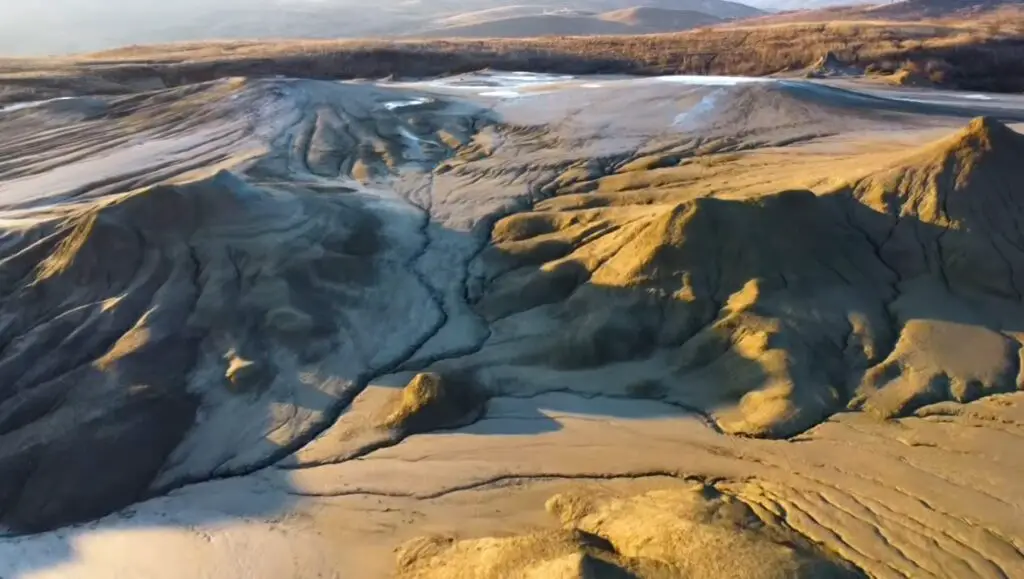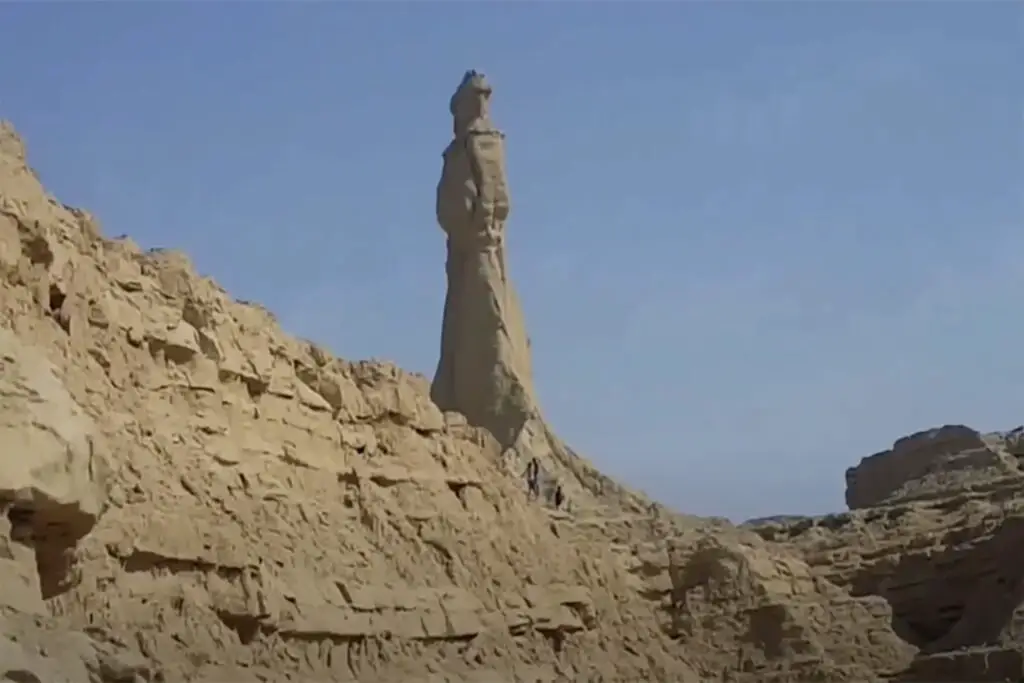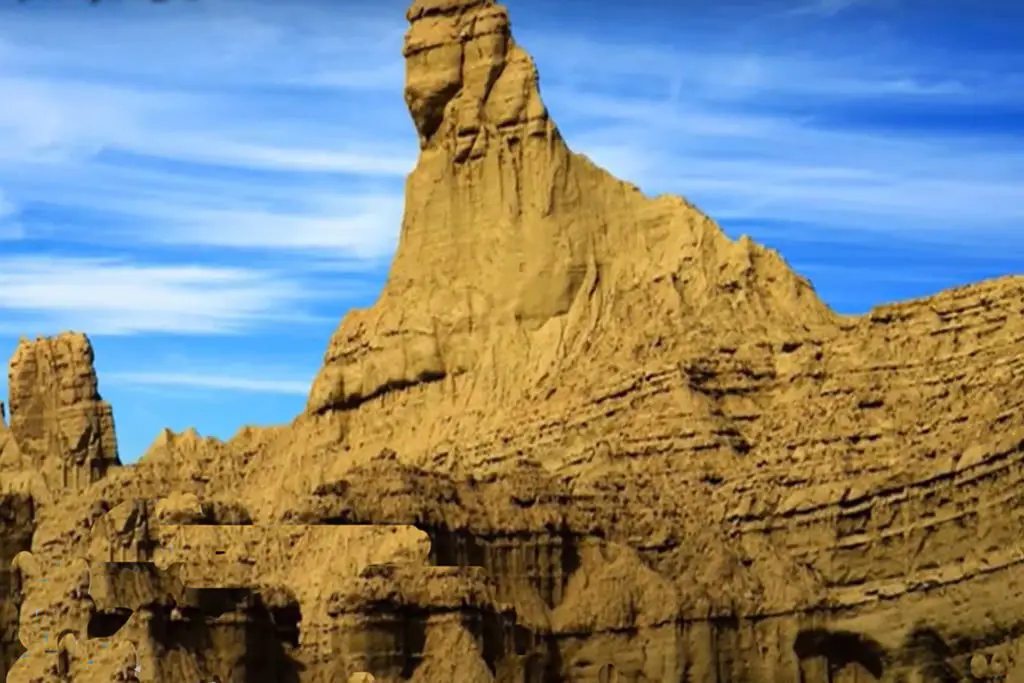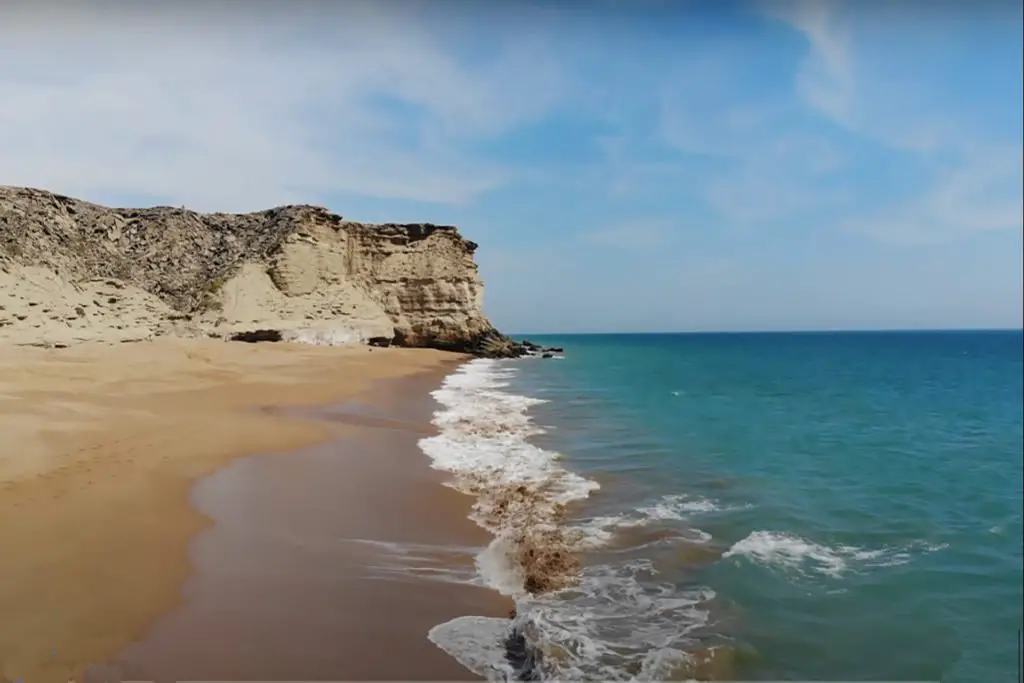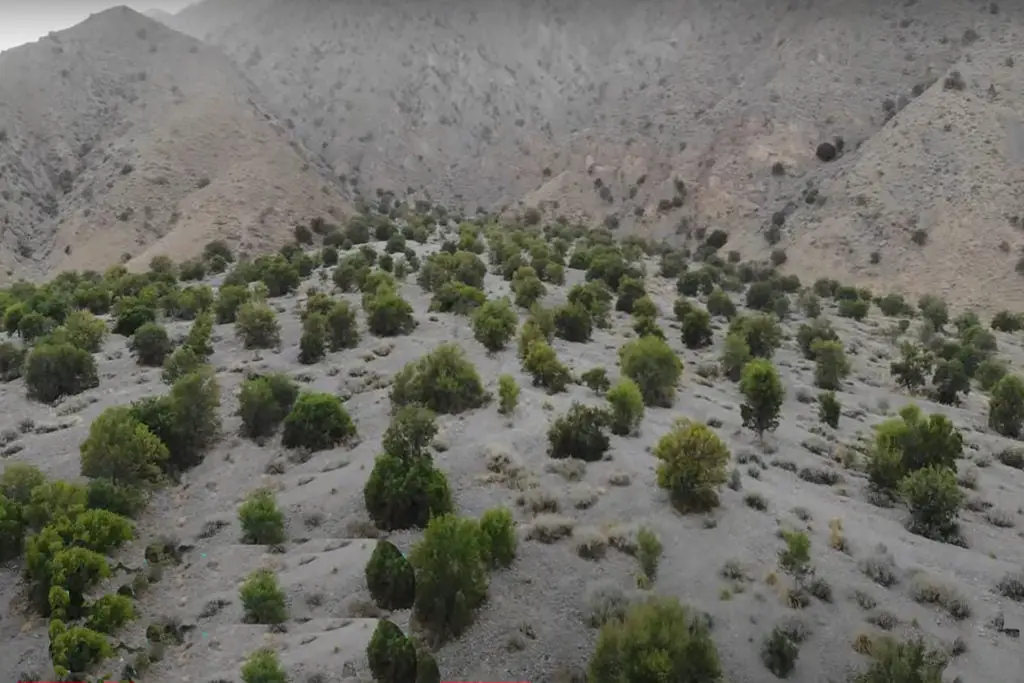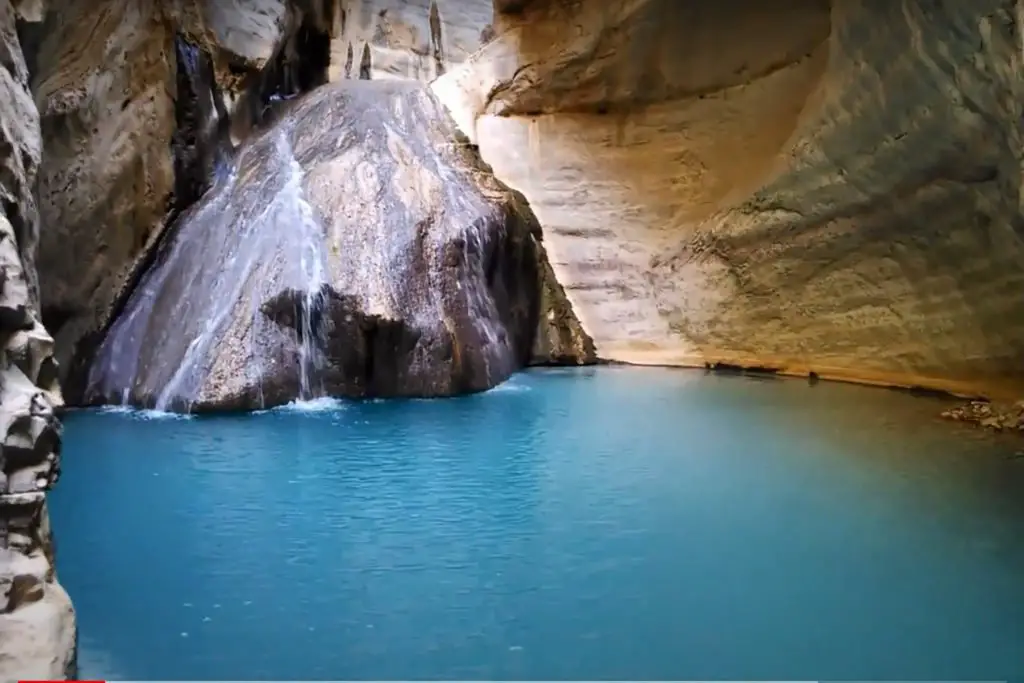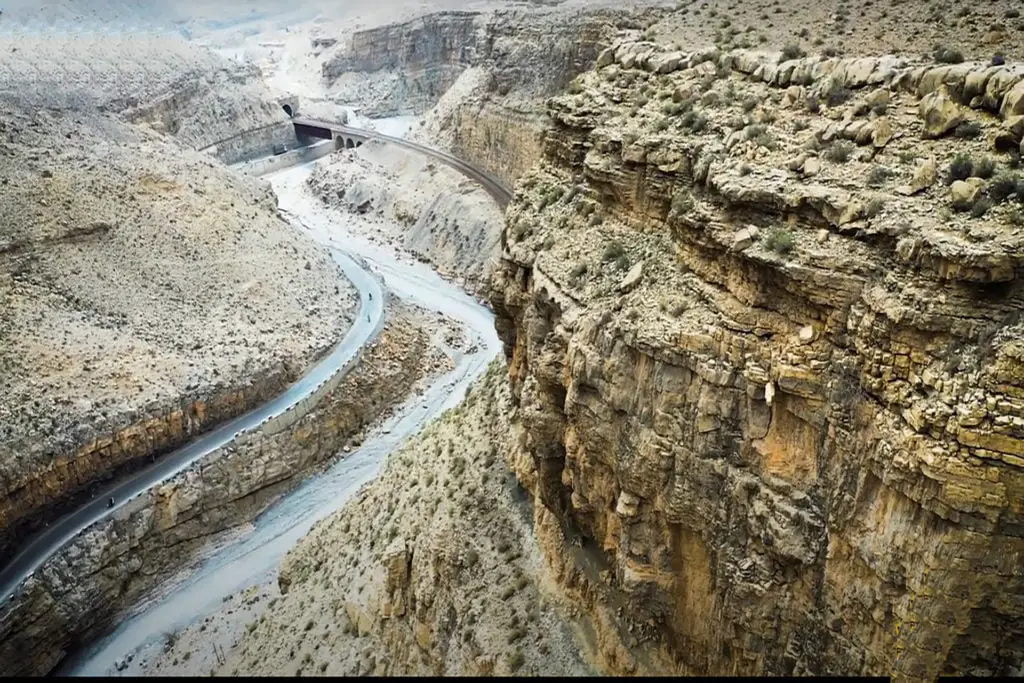The Hingol Mud Volcanoes in Balochistan, Pakistan, are indeed located in the Lasbela District. They are situated approximately 100 kilometers away from Uthal, which serves as the headquarters of the Lasbela District. These mud volcanoes are a fascinating natural feature within the region, drawing the attention of geologists, researchers, and tourists interested in witnessing the unique geological activity of mud volcanoes in the Hingol area.
Mud Volcano in Balochistan, Pakistan Location
Mud volcanoes in Balochistan, Pakistan are located in Hingol National Park, which is the largest national park in Pakistan. It contains about ten clusters of mud volcanoes, the most prominent of which are the Chandragup and Khandewari volcanoes.
The mud volcanoes are situated approximately a kilometer away from the Makran coastal highway, which runs from Lasbela to Gwadar. To find the exact location, you can seek guidance from local residents. A helpful landmark for navigation is the SSGC installation. This area encompasses a complex with three substantial mud volcanoes and several smaller ones.
The three primary mud volcanoes at this location are known as Chandragup1, Chandragup2, and Chandragup3. Notably, one of these volcanoes reaches a towering height of 300 feet. This site holds immense religious significance, serving as an annual pilgrimage destination for Hindus. It is closely associated with the nearby Hinglaj Mata Mandir.
Referred to as Chandrakup as well, this mud volcano is deeply revered in Hindu tradition, and it plays a crucial role in the pilgrimage journey to the Hinglaj Mata Temple. Pilgrims visit this site to offer coconuts into the craters as a gesture of gratitude and to make wishes, believing that their prayers will be heard by the deities.
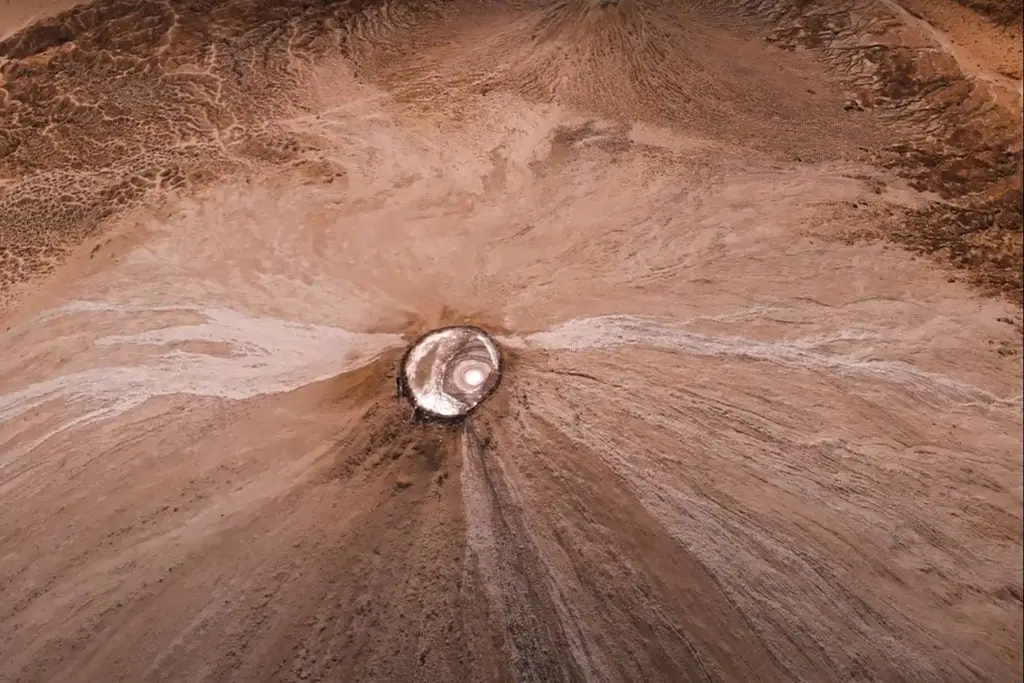
Chandragup Mud Volcano in Balochistan
Chandragup, also known as Chandrakup, is an active mud volcano situated within the confines of Hingol National Park in the Balochistan region of Pakistan. This mud volcano holds profound religious significance for Hindus and serves as a crucial waypoint for pilgrims on their journey to the revered Shri Hinglaj Mata Temple.
Baba Chandrakup, as the Chandragup mud volcano is lovingly called, is venerated as an embodiment of the Hindu deity Shiva. Pilgrims hold the belief that paying homage to Baba Chandrakup is a prerequisite before proceeding to the Shri Hinglaj Mata Temple.
Traditionally, pilgrims partake in an all-night vigil, abstaining from food and engaging in meditation while reflecting on the sins they intend to confess the following day. During this time, they collectively prepare roti (unleavened bread) using ingredients contributed by all the yātrī (fellow pilgrims). On the subsequent day, they ascend the slope of Chandrakup, offering the roti as a sacred offering to Baba Chandrakup. In contemporary rituals, coconuts, betel leaves, and dal (lentils) are also presented as offerings.
Upon reaching the pinnacle of the volcano, pilgrims identify themselves by stating their full name and place of origin. Here, they openly confess their sins in the presence of the assembled group. The chaṛīdār (caretaker) relies on the mud’s bubbling and the wind’s reactions to discern whether the pilgrims’ sins have been forgiven.
As an expression of their devotion and gratitude, devotees cast coconuts into the volcano’s craters, symbolizing their wishes and offering thanks to the deities for answering their prayers. This sacred ritual at Chandragup holds deep spiritual meaning for those who make this pilgrimage.
What is a Mud Volcano?
A mud volcano is a geological formation characterized by its cone-shaped structure. It is created when a mixture of mud, sediment, water, and gases is expelled or forced out onto the seabed or the Earth’s surface. This description is sourced from “Practical Petroleum Geochemistry for Exploration and Production,” published in 2017. Mud volcanoes are fascinating geological phenomena that result from the expulsion of these materials due to various subsurface processes, often involving the escape of pressurized gases and fluids.
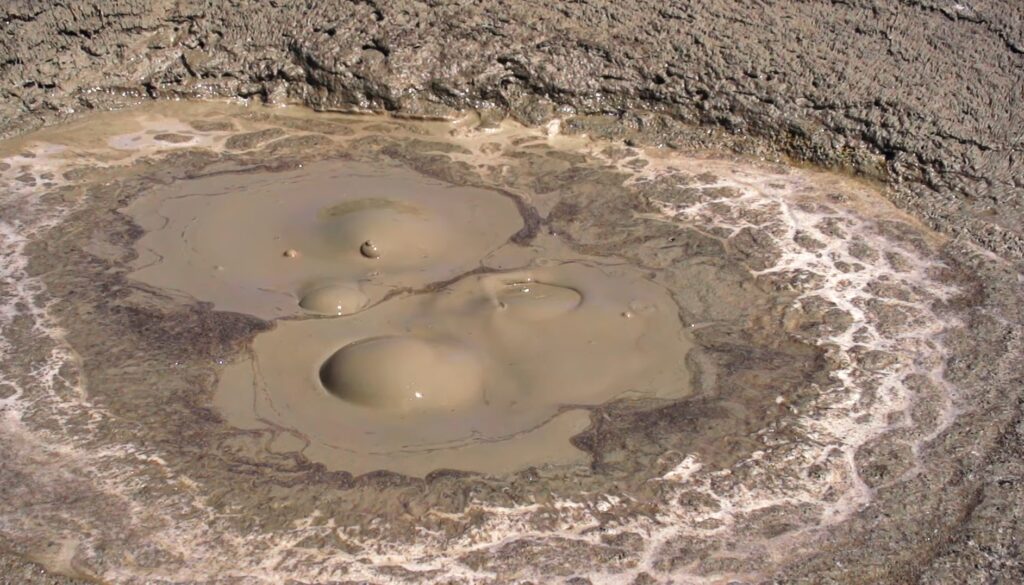
Number of Mud Volcanoes in Balochistan
The Pakistani province of Balochistan is known for its diverse and captivating landscape. Among its many geological marvels, a significant attraction is the existence of 18 mud volcanoes. In fact, Balochistan is home to the largest and tallest known mud volcano in the world. These natural features are a testament to the region’s unique geological characteristics and draw the interest of both scientists and tourists seeking to witness these extraordinary phenomena.
Is a Mud Volcano a real Volcano?
Mud volcanoes differ significantly from traditional igneous volcanoes in terms of their origin and energy source. While typical volcanoes are primarily driven by the eruption of molten rock, known as magma, from deep within the Earth, mud volcanoes operate on a distinct mechanism. Instead of magma, mud volcanoes are primarily fueled by a combination of hot water and natural gas. This fundamental difference in energy sources and processes sets mud volcanoes apart, and it’s important to note that they do not involve the same volcanic activity associated with molten rock. This distinction helps to clarify the nature and behavior of mud volcanoes as compared to their more well-known counterparts.
Mud Volcanoes in Pakistan
In the surveyed region of the Makran continental margin, researchers have identified a total of twelve volcanoes and three trenches. These features exhibit specific characteristics:
- Mud Volcanoes: There are twelve mud volcanoes in the area, with varying heights ranging from 12 to 121 meters. These mud volcanoes are formed by the expulsion of mud, sediment, water, and gases from beneath the Earth’s surface.
- Depressions: In addition to the mud volcanoes, there are depressions or trenches in the region. These depressions have depths that range from -26 to -108 meters below sea level.
- Diameter: The diameter of the mud volcanoes and depressions varies within the range of 500 to 1400 meters. This measurement represents the width or extent of these geological features.
This information provides insights into the geological diversity and characteristics of the Makran continental margin, where a combination of mud volcanoes, trenches, and associated features shape the local landscape.
Volcanos in Pakistan
Tor Zawar is indeed a fissure volcano located in western Pakistan. It is noteworthy for being the only known recent or historically active volcano in Pakistan. Fissure volcanoes are characterized by the eruption of lava and volcanic materials from elongated fractures or fissures in the Earth’s crust, as opposed to the more typical single vent of a stratovolcano.
Tor Zawar’s volcanic activity, while infrequent, has been recorded in the region, making it an area of geological interest. This volcano serves as a reminder of the dynamic geological processes occurring beneath the Earth’s surface, even in regions where volcanic activity is relatively rare.
What are mud volcanoes and where are mud volcanoes located in Pakistan?
The Hingol Mud Volcanoes are situated in the Lasbela District of Balochistan, Pakistan, approximately 100 kilometers away from Uthal, the headquarters of Lasbela District. These unique geological features are located within the boundaries of Hingol National Park, which is not only the largest national park in Pakistan but also a protected area of great natural significance. The Hingol Mud Volcanoes serve as one of the many fascinating attractions within this expansive and diverse national park.
Largest Mud Volcano
In May 2006, a significant geological event occurred in northeastern Java, one of the islands in the Indonesian archipelago. This event involved the eruption of boiling mud, gas, water, and rocks from the ground. The massive volcano that emerged from this eruption was informally nicknamed ‘Lusi.’ Remarkably, the volcanic activity continues to this day, and more than 11 years after its initial eruption, Lusi is still spewing its hot contents, making it one of the more extended volcanic events in recent history. The persistence of Lusi’s activity has drawn the attention of scientists and researchers studying its behavior and the underlying geological processes driving this ongoing phenomenon.
Type of Volcanoes in Pakistan
Pakistan is home to two primary types of volcanoes:
- Mud Volcanoes: Mud volcanoes are relatively common in various regions of Pakistan. These volcanoes are characterized by the eruption of mud, sediment, water, and gases, rather than the typical molten rock (magma) seen in traditional volcanoes. Mud volcanoes, like the Hingol Mud Volcanoes in Balochistan, are a unique geological feature in Pakistan.
- Fissure Volcanoes: Fissure volcanoes, such as Tor Zawar in western Pakistan, are characterized by eruptions along elongated fractures or fissures in the Earth’s crust. They differ from the more typical stratovolcanoes, which have a single central vent. Fissure eruptions often involve the outpouring of lava and volcanic materials from these fractures.
These two types of volcanoes illustrate the geological diversity in Pakistan and the different mechanisms through which volcanic activity can manifest. While Pakistan is not known for frequent volcanic eruptions, these types of volcanoes are significant and contribute to the country’s geological heritage.
Are Mud Volcanoes hot?
Active mud volcanoes indeed exhibit a relatively stable temperature range, which is typically much lower than the high temperatures associated with igneous volcanoes. The temperatures at active mud volcanoes can vary but generally fall within the following range:
- Upper Range: The upper temperature range for mud volcanoes is around 100 °C (212 °F). This is still significantly cooler than the molten lava and extremely high temperatures found in igneous volcanoes.
- Lower Range: In some cases, mud volcanoes can have lower temperatures, occasionally reaching as low as 2 °C (36 °F).
The relatively moderate temperatures of mud volcanoes make some of them suitable for various uses, including as popular “mud baths.” These mud baths take advantage of the therapeutic and mineral-rich properties of the mud, offering visitors the opportunity to immerse themselves in the soothing and mineral-laden mud for health and wellness benefits. The stable temperatures and unique mud composition in these areas contribute to their appeal for such purposes.
Why is an island off the coast of Gwadar in Baluchistan, Pakistan called Mud Volcano Island?
The island off the coast of Gwadar in Balochistan, Pakistan, which is commonly referred to as “Mud Volcano Island,” is named for the methane and mud that actively flow from its surface. Mud Volcano Island is known for its unique geological features, particularly the mud volcanoes that continually emit mud, gases, and other materials.
These mud volcanoes are a remarkable natural attraction, drawing the interest of scientists, researchers, and tourists intrigued by the island’s dynamic geological activity. The methane emissions and mudflows on the island contribute to its distinctive character and name.

